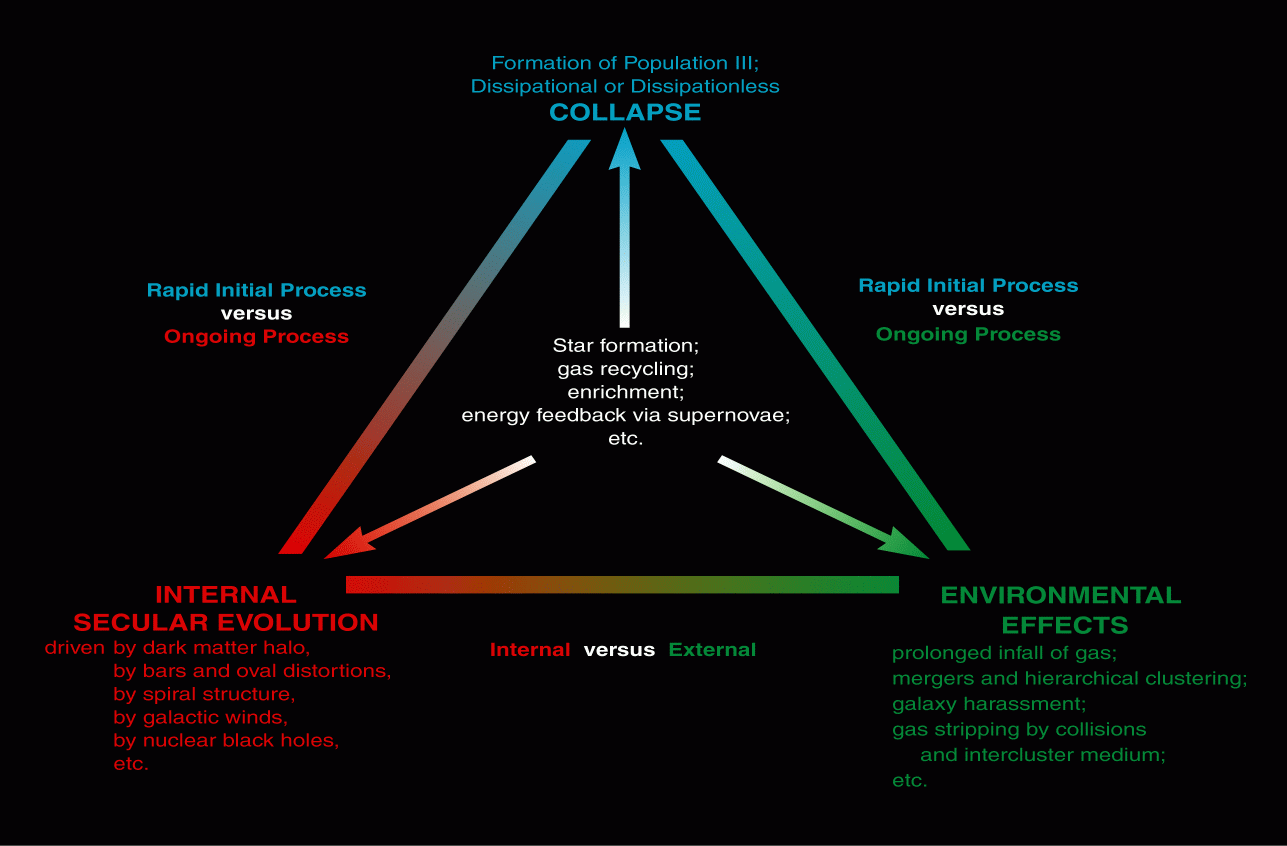

Studies of galaxy formation and evolution have concentrated on an initial formation event (blue) and on subsequent evolution by galaxy mergers and interactions (green). But there is another way that galaxies can evolve. Internal secular evolution can result when subcomponents of a galaxy interact with each other (red). For example, whenever a feature such as a bar or a global spiral pattern has an angular rotation velocity that is different from that of the rest of the galaxy, it can redistribute energy and angular momentum and cause the galaxy to evolve. There is now substantial evidence from observations, theory, and N-body simulations that secular evolution occurs and accounts for many features seen in galaxies. One such process is the formation of pseudobulges.
Secular evolution was for many years a neglected field. I was one of the early people to emphasize its importance in disk galaxies (Kormendy 1979a, b, 1981, 1982, 1984, 1993). The above summary of processes is an updated version of Figure 49 in Kormendy (1982).
Kormendy, J. 1979a, in Photometry, Kinematics and Dynamics of Galaxies,
ed. D. S. Evans (Austin: Dept. Astronomy, Univ. of Texas at Austin), 341
Kormendy, J. 1979b, ApJ, 227, 714
Kormendy, J. 1981, in Structure and Evolution of Normal Galaxies,
ed. S. M. Fall & D. Lynden-Bell (Cambridge: Cambridge Univ. Press), 85
Kormendy, J. 1982, in Morphology and Dynamics of Galaxies, Twelfth
Advanced Course of the Swiss Society of Astronomy and Astrophysics,
ed. L. Martinet & M. Mayor (Sauverny: Geneva Observatory), 113
Kormendy, J. 1984, ApJ, 286, 116
Kormendy, J. 1993, in IAU Symposium 153, Galactic Bulges, ed. H. Habing &
H. Dejonghe (Dordrecht: Kluwer), 209
University of Texas Astronomy Home Page
John Kormendy (kormendy@astro.as.utexas.edu)